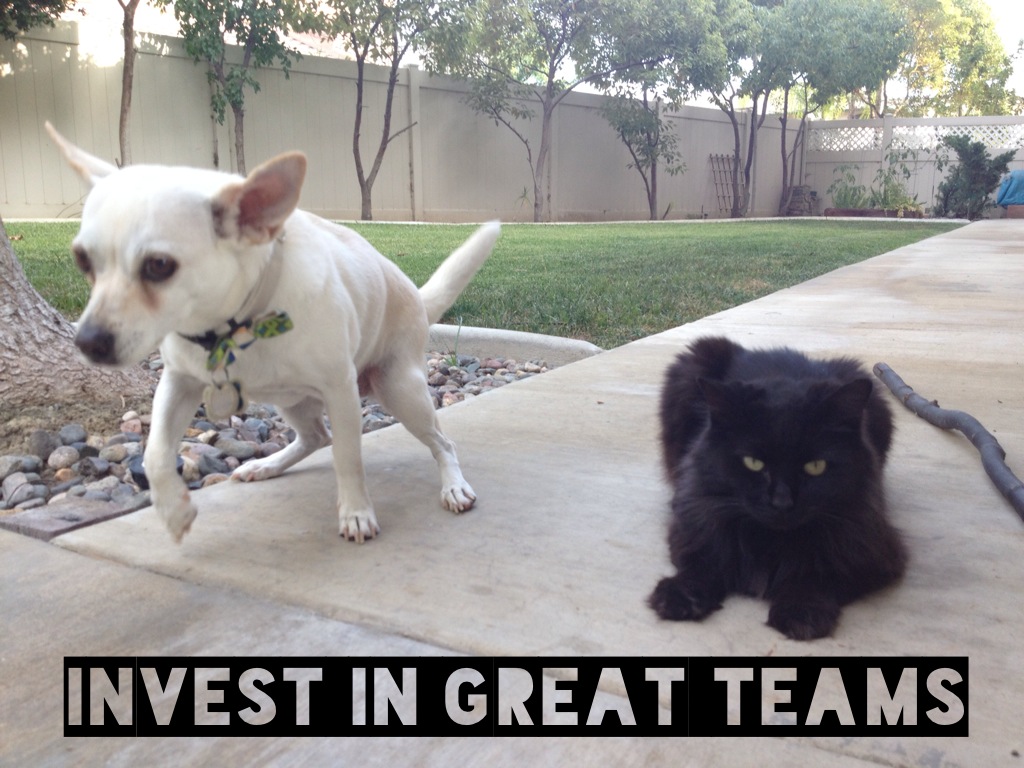 15년 동안 입은 걸레가 된 이 정든 티를 버리면서 2009년도에 내가 쓴 포스팅을 다시 읽어봤다. 이 과거 포스팅 이후 5년 동안 또 어떤 변화들이 있었을까? 궁금해서 다시 한번 이 회사들의 근황들을 조사해봤다. 찾아보니 (시간을 많이 투자하지 않아서 틀린 정보가 있을수도 있음) 1999년 – 2009년에 비해 그닥 큰 변화는 없었던 거 같지만 역시 인수, 상장, 파산 등 몇가지 변화는 있었다.
15년 동안 입은 걸레가 된 이 정든 티를 버리면서 2009년도에 내가 쓴 포스팅을 다시 읽어봤다. 이 과거 포스팅 이후 5년 동안 또 어떤 변화들이 있었을까? 궁금해서 다시 한번 이 회사들의 근황들을 조사해봤다. 찾아보니 (시간을 많이 투자하지 않아서 틀린 정보가 있을수도 있음) 1999년 – 2009년에 비해 그닥 큰 변화는 없었던 거 같지만 역시 인수, 상장, 파산 등 몇가지 변화는 있었다.
이 리스트를 보면서 과연 우리가 투자한 회사들은 10년 후에는 어떤 모습이 되어 있을까라는 생각을 하게된다. 다 잘 될 수도 있겠지만 다 망할수도 있을 것이다. 물론, 조금 더 현실적인 시나리오는 이 중 잘되는 회사도 있고 안되는 회사들도 있겠지만…..우리를 비롯한 모든 투자자들이 100년 이상 가는 회사들을 찾아서 투자하고 싶어하지만 과연 이 중 어떤 회사들이 10년 이상 지속되고, 그게 50년이 되고 또 100년이 될지는 나도 참으로 궁금해지는 월요일 아침이다. 한국은 추석 아침밤 이겠지. 밑에는 내가 2009년도에 쓴 글을 다시 포스팅해본다.
사진에 보이는 t-shirt는 내가 1999년도 실리콘밸리의 한 저녁 행사에서 받은 기념품이다. 지금 생각해보면 입가에 웃음이 생기는데, 바로 인터넷 거품이 터지기 일보 직전이었고 (물론, 아무도 몰랐다), Softbank Venture Capital에서 스탠포드 학생들을 대상으로 저녁과 네트워킹 기회를 제공하는 그 당시에는 흔히 접할 수 있는 그런 행사 중 하나였다. 학교 내부에서 한거는 아니고 약간 떨어진 장소에서 진행되었는데 내 기억으로는 학교에서 행사 장소까지 버스가 제공되었던걸로 생각된다. 지금은 그냥 잠옷으로 입는데, 몇일 전에 와이프가 이 티를 보더니 “오빠, 저 회사 중 지금 제대로 남아서 비즈니스 하는 회사가 있을까?”라는 질문을 했는데, 이 질문이 은근히 내 머리속을 떠나지 않고 있었다. 궁금해서 이 티 뒤에 있는 48개의 (숫자가 애매해서 다시 세고 또 세어봤는데 50이 아니라 48개 맞다) 벤처기업 중 과연 10년 후인 지금 – 2009년 6월1일 – 부로 제대로 비즈니스를 하고 있는 회사가 몇개나 남아 있을까 궁금해서 하나씩 찾아봤다. 와…진짜 힘들고 완전 노가다 였는데 그래도 은근히 재미있었다. 오늘 마이크로소프트에서 Bing이라는 새로운 서치엔진을 발표하였는데 이것도 이 기회에 사용을 해봤다. Not bad at all!
참고로, 위의 48개 벤처기업들은 1999년 나름대로 VC 중 가장 잘나가는 회사 중 하나였던 손정의 대표의 Softbank Venture Capital에서 투자를 받은 회사들이기 때문에 당시만 해도 실리콘 밸리에서 가장 hot한 회사들이자 Stanford MBA들의 로망이었던 회사들이었다. 나도 빨리 학교를 졸업하고 이런 멋진 인터넷 회사에서 마케팅이나 business development를 해야지 하는 생각을 하루에도 몇번씩이나 했던 기억이 난다 ㅎㅎㅎ.
1. AsiaOnline – 한때는 아시아인들을 위한 가장 잘나가는 포탈이었음. 지금 망했음.
2. Concentric – 2000년도에 Nextlink라는 회사에 29억 달러에 인수되었고, Nextlink는 XO Communications로 이름을 바꿈.
3. Net2Phone – 한국의 Dialpad와 더불어서 공짜 VoIP의 선두주자였음. 아직 살아 있음.
4. E-Trade– 아직 살아있고, 잘 되고 있음.
5. More.com – 아무리 찾아도 찾을 수가 없는걸 봐서는 지금 망한거 같음.
6. USWeb/CKS – 웹디자인 회사로 출발하였다가 몇차례 인수 합병에 실패 한 후 파산 신청. 지금은 US Web이라는 웹 마케팅 회사로 존재.
7. Yahoo! – 아직 살아있음.
8. Comergent – Ariba/CommerceOne과 같은 전자상거래를 대표하는 업체 중 하나였는데 지금은 망한거와 다름없음.
9. Rivals.com – 야후가 2007년도에 인수하여서 아직 살아 있음.
10. ThinkLink – 관련 기사가 별로 없는걸로 봐서는 망했음.
11. SmartAge – 망했음.
12. Spinway – 망했음.
13. Urban Media – Softbank와 Accel이 엄청나게 돈을 디리 부었는데, 망했음.
14. CharitableWay – 망했음.
15. Dr.Drew – 웹사이트 개편 중이라고 나오는데, 아직은 살아 있는거 같음. (Update: 잘 되고 있는거 같음)
16. CareAssured – 망했음.
17. Televoke – 망했음.
18. Quova – 아직 in business. (Update: 2010년 11월 Neustar에 인수됨)
19. Appgenesys – 망했음.
20. Buy.com – 아직 in business. (Update: 2010년 5월 일본의 Rakuten에 인수됨)
21. 1-800 Flowers – 아주 잘되고 있음.
22. DoDots – 망했음.
23. Kizai – 망했음.
24. Photopoint – 망했음.
25. BroadDayLight – 망했음.
26. Bluelight.com – 망했음.
27. iPrint.com – 2000년도에 상장하였고, 아직 영업 중.
28. LRN – 아직 잘 하고 있음.
29. Invisible Worlds – 망했음.
30. Law.com – 법 관련 포탈로써 자리를 잘 잡았음.
31. Kefta – Acxiom이 2007년도에 인수하였음.
32. Support.com – 2000년 7월 상장해서 잘 하고 있음.
33. Model-E – 망했음.
34. ZDNet – 잘 되고 있음.
35. ToysRUs.com – 경기를 많이 타고 있지만, 그래도 건실함. (Update: 아직도 경기를 많이 타고 있고, 건실하지는 않고 위험함)
36. CriticalPath – 49개 회사 중 가장 탄탄한 비즈니스 모델을 가지고 있는 회사 중 하나. 개인적으로 내가 좋아하는 회사이기도 함. (Update: 2013년 12월 Openwave Messaging 사에 인수됨)
37. PeoplePC – 2002년도에 EarthLink가 인수하였는데, 인수 당시 상당히 상태가 좋지 않았음.
38. ELoan – 아직 살아 있지만, 상태가 그다지 좋지는 않음.
39. AllAdvantage – 와…이 회사에 대해서는 내가 한마디를 하지 않을 수가 없다. AllAdvantage.com은 아마도 1999년도 스탠포드 캠퍼스에서 가장 이야기가 많이 되었던 벤처 industry의 darling 이었다. 웹서핑을 하면서 AllAdvantage.com을 실행시켜면 하단에 광고 배너들이 노출되고 광고들을 더 많이 볼수록 광고 수익이 발생해서 회사와 유저가 광고 수익을 나누어 갖는 그 당시만 해도 정말 획기적인 비즈니스 모델을 가지고 있던 모든 스탠포드 대학생들의 로망이었다. 지금은 완전 대박 울트라 망했음.
40. Preview Systems – 망했음.
41. Rentals.com – 아직 살아 있음.
42. CruelWorlds – 망했슴.
43. HotVoice – 망했슴.
44. Dovebid – 아직 in business. (Update: 2003년도에 상장했다가 현재 시장에서 퇴출되었음)
45. Ecoverage – 망했음.
46. Biztro – 망했음.
47. FastParts – 망했음.
48. Bayla – 망했음.
-망한 회사 27개 28개
-간신히 살아남은 회사 12개
-그나마 잘 되고 있는 회사 9개 8개 (E-Trade, Yahoo!, Rivals.com, 1-800 Flowers, Law.com, LRN, ZDNet, ToysRUs.com, CriticalPath)
즉, 48개 회사 중 절반 이상이 망했는데, 스스로 이 회사들을 찾아보면서 깜짝 놀라는 내 자신을 발견하였다. 1999/2000년도 실리콘 밸리에서 왕같이 군림하던 회사들이 지금은 우리와 같은 노땅들의 기억속에서만 살아 있다는 사실이 참으로 씁쓸하다. 특히, AllAdvantage와 같은 회사들은 그 당시 학교에서 열심히 공부하던 순진한 학생들의 마음속에 벤처의 꿈을 잔뜩 심어주고 학교를 때려치우고 벤처의 열풍으로 인도하였던 그러한 회사들이었는데…..
앞으로 10년 후에 또다시 이와 비슷한 글을 쓴다면, 과연 그때는 어떤 회사들이 남아 있을까. Facebook? MySpace? Twitter? Musicshake?

 ‘Mentor(멘토)’ – 난 최근에 이 말에 대해서 많은 생각을 했다. 스타트업 업계뿐만이 아니라 산업과 사회 전반에 걸쳐서 멘토라는 말이 많이 사용된다. 실은 나도 그동안 적지 않게 나 자신을 창업가들한테 ‘멘토링’을 제공하는 멘토라는 말을 하고 다니기도 했다. 그런데 더 많은 회사와 창업가들을 만나고, 더 많은 회사에 투자하면서 자신을 멘토라고 하는 게 얼마나 쪽팔리고 우스운 건지 절실히 느끼고 있다. 특히나 이번에 한국에 오래 머물면서 많은 창업가를 아주 깊고 인간적으로 알 기회가 있었는데, 오히려 내가 멘토로 삼고 싶은 20대 중반 창업가들도 더러 있었다.
‘Mentor(멘토)’ – 난 최근에 이 말에 대해서 많은 생각을 했다. 스타트업 업계뿐만이 아니라 산업과 사회 전반에 걸쳐서 멘토라는 말이 많이 사용된다. 실은 나도 그동안 적지 않게 나 자신을 창업가들한테 ‘멘토링’을 제공하는 멘토라는 말을 하고 다니기도 했다. 그런데 더 많은 회사와 창업가들을 만나고, 더 많은 회사에 투자하면서 자신을 멘토라고 하는 게 얼마나 쪽팔리고 우스운 건지 절실히 느끼고 있다. 특히나 이번에 한국에 오래 머물면서 많은 창업가를 아주 깊고 인간적으로 알 기회가 있었는데, 오히려 내가 멘토로 삼고 싶은 20대 중반 창업가들도 더러 있었다. 투자를 하다보면 다른 업종이 제공하지 못하는 많은 특권과 혜택을 누릴 수 있다 (물론, 이와는 반대로 다른 업종이 제공하지 않는 많은 골치거리와 스트레스 또한 경험을 하지만…).
투자를 하다보면 다른 업종이 제공하지 못하는 많은 특권과 혜택을 누릴 수 있다 (물론, 이와는 반대로 다른 업종이 제공하지 않는 많은 골치거리와 스트레스 또한 경험을 하지만…).